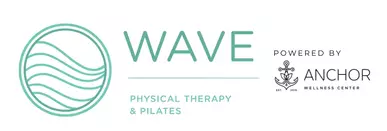
A pinched nerve in the neck, medically known as cervical radiculopathy, occurs when a nerve root in the cervical spine becomes compressed or irritated. This compression can result from a variety of factors, including herniated discs, bone spurs, or degenerative spinal changes. Early symptoms often include localized neck pain or discomfort at the top of the shoulder, which can gradually radiate down the arm as the nerve becomes more irritated. Common sensations include tingling, numbness, or weakness along the affected nerve’s pathway.
What’s interesting here is that it doesn’t usually start that way. Often, the first symptom is pain at the top of the shoulder blade near the base of the neck or even the top of the shoulder, near the deltoids.
Your First Move Should Be to Schedule a Physical Therapy Evaluation
At the onset of new pain in your neck or shoulder without trauma (idiopathic), the first step in addressing a pinched nerve is a thorough evaluation with a physical therapist (PT). Research supports early physical therapy intervention for cervical radiculopathy as a way to improve outcomes, reduce pain, and limit chronic disability (StatPearls, 2025). A PT assessment helps identify the underlying cause—whether it’s a herniated disc or another factor—and develops a tailored plan to relieve nerve compression safely.
Many people initially turn to massage therapy, thinking it will help alleviate tension or discomfort. While massage can relieve general muscle tightness, it can always worsen nerve symptoms if deep tissue pressure irritates an already compressed nerve. For true nerve compression, a structured PT evaluation is safer and more effective initially (massage may be beneficial at some point but learning where the nerve compression is happening first will support long term outcomes). This also includes self-massage. Those lacrosse balls and fascia blasters that our patients own are great tools but can sometimes cause more damage than help.
Determining Treatment Pathways
After assessment, the PT decides whether conservative care is appropriate or if more intensive interventions are needed:
Conservative care may include:
- Physical Therapy: Exercises to strengthen neck and upper back muscles, improve posture, and unload joints that compress the nerve.
- Cervical Traction: Gentle stretching of the neck to relieve nerve pressure (see more on this below).
- Nonsteroidal Anti-Inflammatory Drugs (NSAIDs): To reduce inflammation and alleviate pain.
More intensive interventions may include:
- Corticosteroid injections to reduce nerve inflammation.
- Surgical consultation for severe or persistent symptoms.
Should You Try Cervical Traction? Here’s What You Need to Know
Cervical traction can be effective for some individuals, but it must be approached carefully. In a recent interview with Nichole Owens in WebMD’s article, What to Know About Neck Traction, I shared:
“Cervical (neck) traction is not something a person should be doing without guidance from a Doctor of Physical Therapy or other medical personnel. Home traction units are generally safe; however, too much traction can cause damage to the spine or nerves. Additionally, too much traction could cause strain through muscles if not properly applied or positioned. The only indication for performing home traction is if a person is dealing with a herniated disc in their cervical spine.”
Monitoring progress: The primary sign that traction is working is centralization of symptoms, where tingling or numbness in the hand moves back toward the neck.
Duration: For home traction devices, such as the TASZOOS Inflatable Cervical Traction Device, it is typically used 10–15 minutes daily or as tolerated for relief of acute symptoms.
Important note: Traction does not correct postural habits like hunching over a phone or computer. Dr. Crawford emphasizes:
“This should not be used as a tool to offset poor posture, that would be like drinking Diet Coke as a way to offset the calories of eating cake for breakfast, lunch, and dinner. The best way to address postural deficits is with a proper ergonomic setup and targeted strength training.”
Managing Pain at Home: TENS Units
While undergoing evaluation and treatment for a pinched nerve, many patients find relief from home TENS (Transcutaneous Electrical Nerve Stimulation) units. TENS units use mild electrical currents delivered through electrodes placed on the skin to interrupt pain signals to the brain and stimulate endorphin release, providing temporary pain relief. They do not address the underlying nerve compression or inflammation, but they can make symptoms more tolerable while conservative treatments—such as physical therapy, posture correction, anti-inflammatory medications, and targeted traction—work to relieve pressure on the nerve. Dr. Sarah Crawford emphasizes that TENS should be seen as a symptom management tool rather than a cure, used in conjunction with a structured plan to address the root cause of cervical radiculopathy.
Understanding Why It Happened
In some cases, cervical radiculopathy occurs without a clear, identifiable cause. Many herniated discs develop spontaneously or randomly, while others are triggered by identifiable events such as lifting something heavy, motor vehicle accidents, or acute trauma (Mayo Clinic, 2025). However, even when a specific incident isn’t apparent, repetitive behaviors and chronic postural habits can play a significant role. Activities such as prolonged computer or phone use, slouching, or holding the head forward for extended periods place continual stress on the cervical discs and surrounding structures. Over time, this can lead to microtrauma, disc degeneration, and nerve compression.
Additionally, weakness or instability in the neck and upper back muscles can exacerbate the problem. Without adequate muscular support, the cervical spine relies more on passive structures—like ligaments and discs—to maintain stability, increasing the risk of disc herniation and radiculopathy. Addressing these contributing factors through posture correction, ergonomic adjustments, and targeted strengthening exercises is essential not only for recovery but also for preventing recurrence.
Conclusion
A pinched nerve in the neck requires a comprehensive, individualized approach. Early evaluation by a physical therapist ensures safe and effective management, while inappropriate treatments, such as certain massage techniques, can exacerbate symptoms. When indicated, home cervical traction can provide temporary relief for acute herniated discs, but it should be used with guidance. In parallel, identifying contributing factors, addressing posture, and implementing strength-based rehabilitation are key to preventing recurrence and promoting long-term spinal health.
References:
Owens, Nichole. What to Know About Neck Traction (Cervical Traction). WebMD. https://www.webmd.com/pain-management/what-to-know-about-neck-traction
StatPearls. Cervical Radiculopathy. https://www.ncbi.nlm.nih.gov/books/NBK470412/
Mayo Clinic. Herniated Disk. https://www.mayoclinic.org/diseases-conditions/herniated-disk/symptoms-causes/syc-20354095


